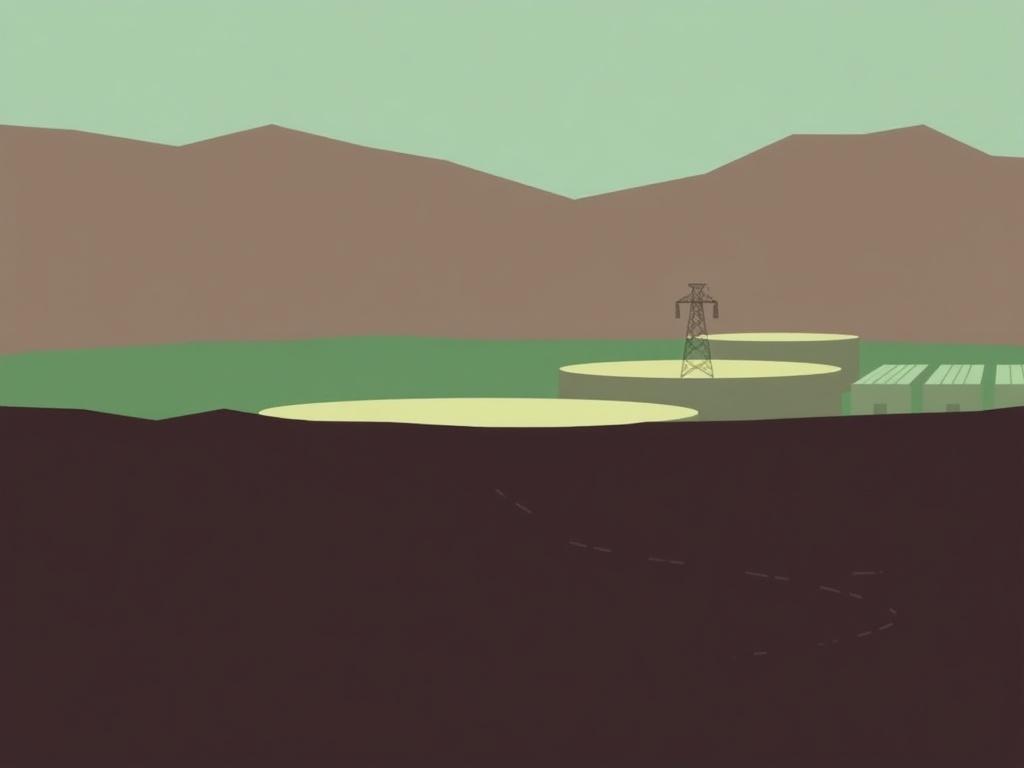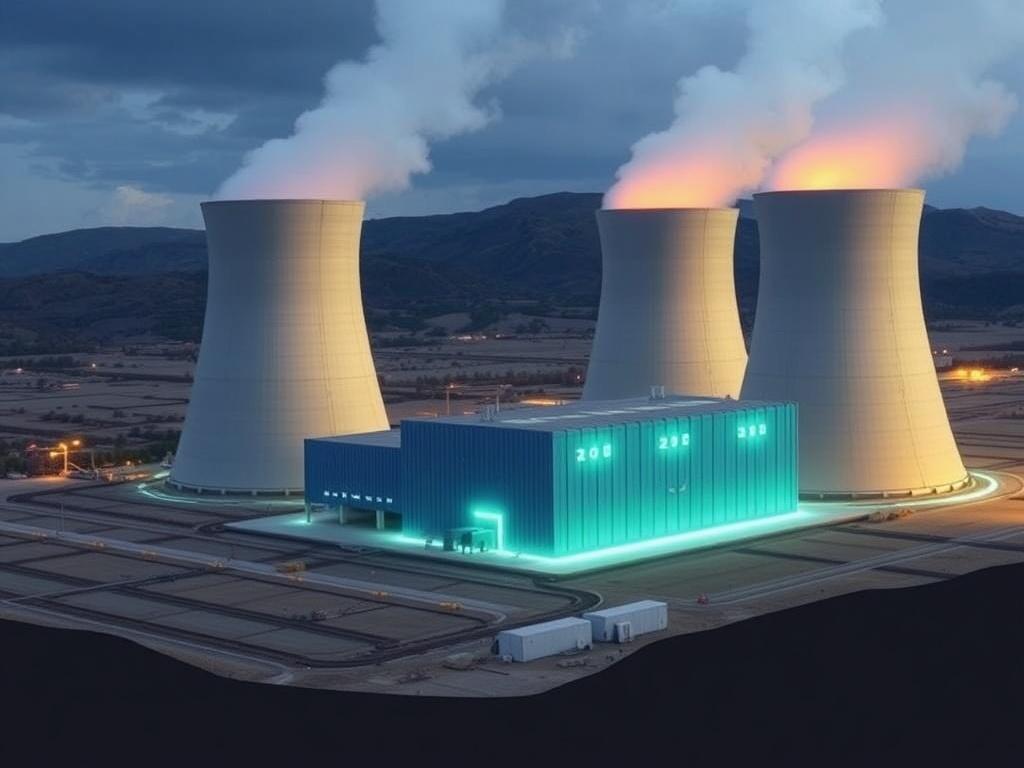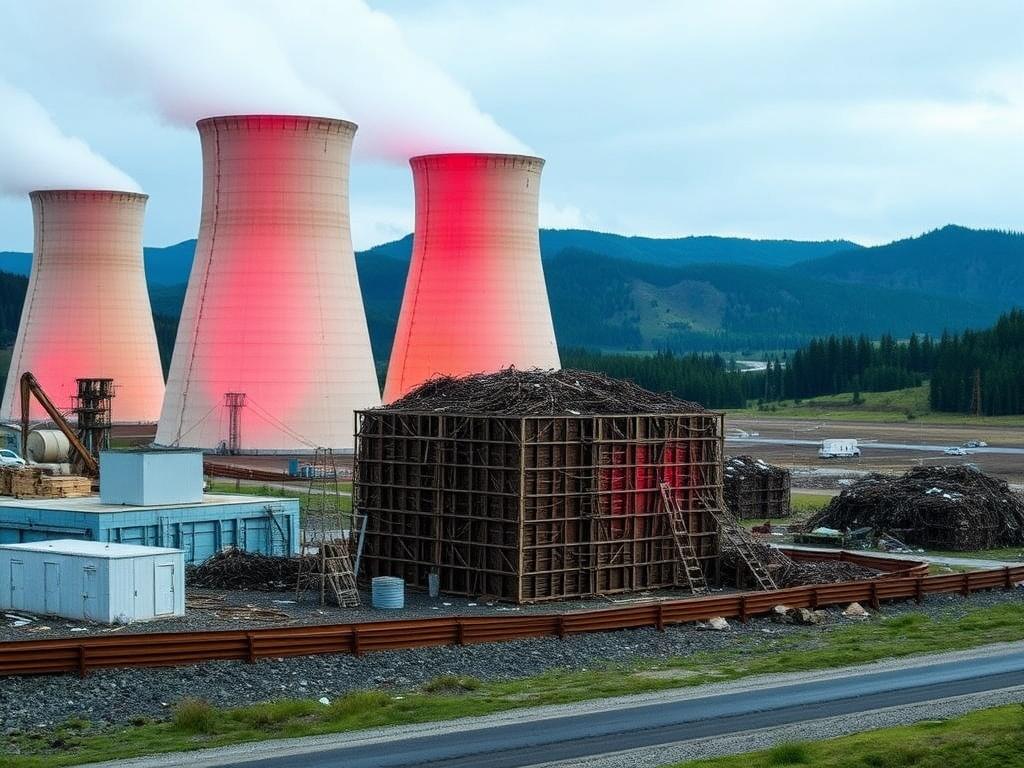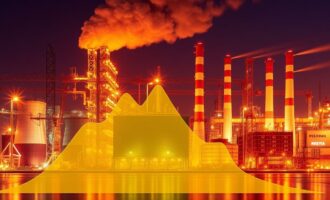- Understanding Nuclear Waste: What Are We Storing?
- The Challenges Inherent in Nuclear Waste Storage
- Long-term Safety and Environmental Concerns
- Technical and Engineering Difficulties
- Political and Social Opposition
- Current Methods of Nuclear Waste Storage
- On-Site Storage at Nuclear Power Plants
- Deep Geological Repositories (DGRs)
- Reprocessing and Recycling Nuclear Waste
- Exploring Innovative Solutions in Nuclear Waste Storage
- Advanced Reactor Technologies and Waste Minimization
- Deep Borehole Disposal
- Space Disposal—A Controversial Dream
- The Global Political Landscape of Nuclear Waste Storage
- Public Perception and the Role of Communication
- Summary of Key Pros and Cons of Nuclear Waste Storage Methods
- The Future of Nuclear Waste Storage: What Lies Ahead?
- Conclusion
Nuclear energy has long been a powerful source of electricity, touted for its capacity to generate massive amounts of energy with minimal greenhouse gas emissions. Yet, one issue remains as a dark cloud hanging over its widespread acceptance: nuclear waste storage. The debate over nuclear waste storage is complex, involving scientific, environmental, political, and social dimensions that stir passionate opinions across the globe. How do we safely manage these hazardous materials that remain radioactive for thousands of years? What are the current technologies, and what are the risks and benefits associated with each? This article unpacks the debate comprehensively, diving into the challenges of nuclear waste storage, exploring innovative solutions, and contemplating the future prospects for this critical issue.
Understanding Nuclear Waste: What Are We Storing?

Before diving into the debate, it’s important to understand exactly what nuclear waste is and why its storage is such a critical concern. Nuclear waste mainly comes from spent fuel used in nuclear reactors, which no longer efficiently sustains a nuclear reaction but remains highly radioactive. This waste contains radioactive isotopes that can be harmful to living organisms and the environment for thousands to millions of years.
There are several categories of nuclear waste:
- Low-level waste (LLW): Includes contaminated gloves, tools, clothing, and other materials. These wastes have low radioactivity and often decay to safe levels within a few decades.
- Intermediate-level waste (ILW): Contains higher radioactivity and requires shielding, typically including resins, chemical sludges, and metal reactor fuel cladding.
- High-level waste (HLW): This is the most dangerous and long-lived waste, primarily spent nuclear fuel rods and the waste products from reprocessing reactors. HLW requires careful management and isolation for thousands of years.
The primary focus of the debate tends to be on high-level waste storage because of its danger and longevity. This waste must be isolated from humans and the environment until it decays to safe levels—a timeline so vast it challenges human comprehension.
The Challenges Inherent in Nuclear Waste Storage
Storing nuclear waste safely is far from straightforward. The challenges are multifaceted, spanning technical, environmental, and social domains.
Long-term Safety and Environmental Concerns
The most pressing challenge is ensuring the safety of storage solutions over incredibly long timeframes. High-level nuclear waste requires isolation for at least 10,000 years, and some of its components remain dangerous for hundreds of thousands of years. This means any storage solution must withstand geological and climatic changes, earthquakes, floods, and potential human intrusion for millennia.
Additionally, the risk of radioactive contamination leaking into groundwater, soil, or atmosphere is a huge concern. Once released, radioactive materials can accumulate in living organisms and cause severe health issues ranging from cancer to genetic defects, impacting ecosystems and human populations alike.
Technical and Engineering Difficulties
Current technologies for storing nuclear waste must overcome significant technical hurdles:
- Container durability: The containers used to hold waste must resist corrosion, cracking, and failure over millennia.
- Geological stability: Suitable storage sites require geologically stable formations, such as deep underground repositories in crystalline rock or salt formations that prevent movement and infiltration of water.
- Monitoring and retrieval: The ability to monitor waste storage and retrieve it if necessary adds layers of complexity to storage design.
Political and Social Opposition
Perhaps equally challenging are the political and social dynamics surrounding nuclear waste storage. Many communities reject storage facilities in what is known as the “Not In My Backyard” (NIMBY) phenomenon. Concerns over safety, environmental justice, and economic impacts fuel local opposition.
When governments propose sites for long-term repositories, the controversy often becomes intense, involving protests, legal battles, and deep mistrust. This social resistance can stall or halt projects, as was the case with the Yucca Mountain nuclear waste repository in the United States.
Current Methods of Nuclear Waste Storage
Despite the many challenges, nations have developed several strategies for nuclear waste storage, each with advantages and limitations.
On-Site Storage at Nuclear Power Plants
Initially, spent nuclear fuel is stored on-site at reactor facilities in specially designed pools filled with water that cools and shields radiation. After several years, the fuel may be transferred to dry cask storage—sealed, heavily shielded containers housed above ground.
| Storage Type | Description | Advantages | Drawbacks |
|---|---|---|---|
| Spent Fuel Pools | Water pools used to cool and shield spent fuel rods shortly after removal. | Effective cooling, proven technology. | Requires large infrastructure, vulnerable to accidents or terrorism. |
| Dry Cask Storage | Sealed steel or concrete casks stored above ground. | Robust, modular, relatively safe over decades. | Not a permanent solution; potential surface vulnerability. |
Deep Geological Repositories (DGRs)
Deep geological repositories aim to store nuclear waste deep underground in stable geological formations, isolating the material for thousands of years. Countries like Finland, Sweden, and France are spearheading DGR development efforts.
These repositories are designed with multiple engineered barriers such as corrosion-resistant containers, bentonite clay buffers, and the surrounding rock itself serving as natural protection.
Reprocessing and Recycling Nuclear Waste
Some nations also invest in reprocessing nuclear fuel to extract usable isotopes, reducing the volume of high-level waste. This process, however, is costly, technically challenging, and raises proliferation concerns since some extracted materials can potentially be diverted to weapons programs.
Exploring Innovative Solutions in Nuclear Waste Storage
As traditional methods face barriers, scientists and engineers continue innovating to improve nuclear waste management.
Advanced Reactor Technologies and Waste Minimization
New reactor designs, such as fast reactors and thorium reactors, aim to minimize waste toxicity and volume by burning long-lived isotopes more completely. These technologies, still largely in development and testing phases, could dramatically reduce the nuclear waste problem in the future.
Deep Borehole Disposal
Deep borehole disposal involves drilling narrow holes several kilometers into the earth’s crust and placing waste canisters within. This idea exploits stable geological strata to isolate waste safely and may be less costly than building vast underground repositories.
Space Disposal—A Controversial Dream
Although technologically daunting and expensive, launching nuclear waste into space has been proposed. The idea is to send it either into the sun or deep space, completely removing it from the Earth. However, the risk of launch accidents spreading radioactive materials and the astronomical costs make this solution far from practical for now.
The Global Political Landscape of Nuclear Waste Storage

Nuclear waste storage is not just a technical issue; it’s deeply political. International regulatory bodies like the International Atomic Energy Agency (IAEA) establish guidelines, but the sovereignty of nations means policies vary widely.
Countries with significant nuclear programs face differing public opinions. For instance:
- United States: After the closure of Yucca Mountain, the U.S. lacks a central repository, relying on interim storage at various sites, leading to prolonged political deadlocks.
- Finland: Leading the way, Finland is finalizing a deep geological repository expected to open in the 2020s, setting an example for others.
- Japan: With limited geological space and public resistance, Japan struggles with nuclear waste solutions amid its heavy reliance on nuclear energy.
International cooperation, transparency, and community engagement are crucial for any durable solution to gain acceptance and succeed.
Public Perception and the Role of Communication
One of the lesser-discussed yet critical aspects of the nuclear waste storage debate is public perception. Nuclear waste instills fear due to its invisible danger and historical nuclear accidents. Clear and honest communication by stakeholders can build trust and reduce misinformation.
Effective engagement should include:
- Informing communities about risks and safety measures.
- Involving local populations in decision-making.
- Addressing ethical concerns about burdening future generations.
Without public buy-in, even the most scientifically sound solutions can fail.
Summary of Key Pros and Cons of Nuclear Waste Storage Methods

To provide a clearer picture, here’s a summarized overview:
| Storage Method | Pros | Cons |
|---|---|---|
| On-Site Storage (Pools & Dry Casks) | Established technology, manageable risks short-term, flexible | Security risk, not long-term solution, space constraints |
| Deep Geological Repository | Long-term safety, isolation from biosphere, multiple barriers | High upfront costs, social opposition, complex engineering |
| Reprocessing | Reduces waste volume, recycles usable materials | Expensive, proliferation risk, generates secondary wastes |
| Deep Borehole Disposal | Stable geology, potentially lower cost, less surface risk | Still experimental, retrieval very difficult, acceptance unknown |
| Space Disposal | Complete removal from Earth | Very expensive, high launch risk, currently impractical |
The Future of Nuclear Waste Storage: What Lies Ahead?
As the world seeks cleaner energy sources, nuclear power remains a key player in the energy transition, especially given climate change. However, resolving the nuclear waste storage challenge is vital for the sustainability of nuclear energy.
Looking forward, several trends may shape the future of nuclear waste storage:
- Technological breakthroughs: Advanced reactors and new disposal technologies could alter the risk landscape.
- Policy innovations: Long-term, integrated waste management policies that incorporate social, environmental, and technical aspects.
- International collaboration: Shared repositories or technology exchanges may emerge as practical solutions.
- Improved community engagement: Proactive communication and inclusion of affected populations will be essential for project success.
For nuclear energy to fulfill its promise, the debate over nuclear waste storage must progress from controversy to consensus, grounded in science, transparency, and respect for communities.
Conclusion
The debate over nuclear waste storage is a profound reflection of humanity’s challenge to responsibly manage powerful technologies. It touches on deep scientific questions, immense engineering tasks, and the social contract between generations. Despite the challenges, progress has been made with promising approaches like deep geological repositories and advanced reactors offering hope. Yet, no solution is perfect; each involves trade-offs in safety, cost, and societal acceptance. Moving forward, it is clear that technical innovation alone won’t suffice. Political will, transparent policymaking, and meaningful public engagement are equally crucial to navigate the complex landscape of nuclear waste storage. Ultimately, finding workable and broadly accepted solutions will not only safeguard the environment and public health but also ensure that the benefits of nuclear energy remain accessible to future generations in a safer and more sustainable world.
Как вам статья?







